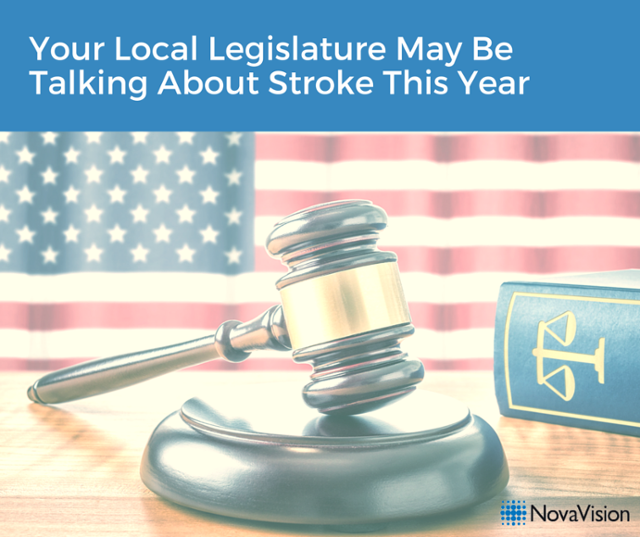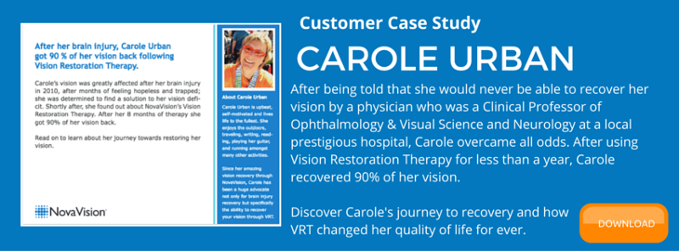
2016 is already shaping up to be a big year for the stroke community. With changes to healthcare policy being made at both the State and Federal level, it’s more important than ever to stay informed and get involved. Today we’re highlighting two important issues on the Federal level as well as sharing important resources to stay informed on the State level. Here’s what you need to know:
A stroke survivor himself, Senator Mark Kirk introduced the FAST Act in the U.S. Senate in May of 2015. The purpose of this bill is to make it easier for patients to connect with specialists by requiring Medicare to cover telestroke services regardless of location. Congressman Griffith (VA-09) introduced similar legislation in the U.S. House of Representatives with Congresswoman Beatty (OH-03), another stroke survivor.
A similar bill, H.R.2799, was brought to the house on June 17th, 2015 by Representative H. Morgan Griffith. If passed, this legislation would increase the speed of diagnosis and treatment for patients experiencing a stroke. These pieces of legislation would achieve this goal by expanding access to telestroke technology to those who need it the most.
If you would like to see this become a reality, you can contact members of Congress today and urge them to co-sponsor the FAST Act (S. 1465/H.R. 2799). The National Stroke Association has made it easy to make an impact. They have created a complete draft of a letter for you to personalize and send to congress, asking them to expand access to telestroke services. You can do so by visiting The National Stroke Association.
CONNECT for Health Act
Recently, a bipartisan group of U.S. Senators and Representatives introduced the Creating Opportunities Now for Necessary and Effective Care Technologies (CONNECT) for Health Act. The CONNECT for Health Act would expand telehealth and RPM or remote patient monitoring services available under Medicare. Doing his would improve the outcome of patients’ health outcomes while facilitating their ability to connect with their doctors and also implement cost-effective solutions for patients and providers alike.
The current Social Security Act limits access to telehealth and RPM services available under Medicare. Several restrictions limit the patient’s eligibility for telehealth services based on location among other things. Other barriers to care include payment reimbursement requirements for healthcare and insurance providers as these limit access to telehealth and RPM coverage, but there may be a light at the end of the tunnel.
According to the National Stroke Association, the CONNECT for Health Act would remove most of those current restrictions on telehealth access which would enhance a patient’s access to care that is cost-effective and potentially life-saving. It is also important to note that the CONNECT for Health Act would expand access to telestroke care to all Medicare beneficiaries. Access to telestroke has been gaining more and more attention in the news lately as it is an imperative component of stroke prevention and recovery. The myriad of research into acute stroke treatment protocols has illustrated that fast diagnosis and treatment of stroke is critical to minimizing post-stroke disabilities.
In summary, the CONNECT for Health Act has serious potential to increase access to telehealth and RPM under Medicare while also reducing the negative impacts of stroke, particularly for residents in rural areas. Similar to the FAST Act highlighted above, the National Stroke Association has made it easy to get involved and send a personalized letter to congress. If you would like to take action, you can visit The National Stroke Association here.
State Issues
Although there are currently two major issue making their way through Congress, many healthcare policies are created at the state level by your state legislators. If you’d like more information or have questions about how to get involved in your state, the American Stroke Association has created a list of their advocacy contacts in each of the 50 states. For a closer look into the policies and issues that may be affecting your state specifically, the National Stroke Association’s Stroke Advocacy Network has created the State Advocacy Action Center to give provide the information stroke survivors and family members alike may need to become an advocate for the stroke community in their state.
Strokes influence the lives of so many Americans each year and these new laws and regulations are taking us one step closer to the care and prevention so many people need. It is important for every survivor who has struggled to find the best care possible, suffered from vision loss only to be told there wasn’t a cure, didn’t have access to life changing telemedicine, or has watched a loved one go through the same issues to pay close attention in the upcoming year. We all have the power to make positive changes.



